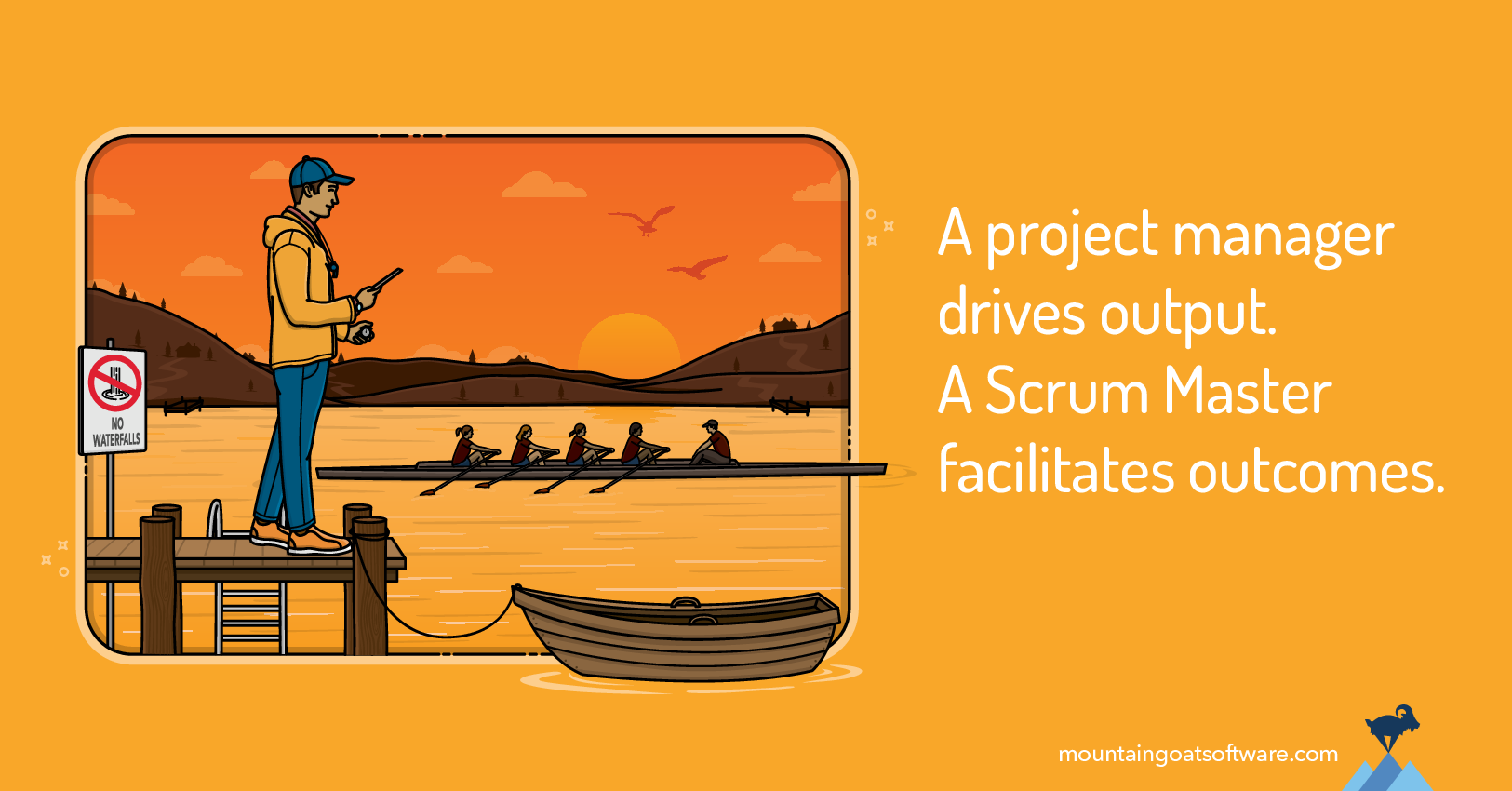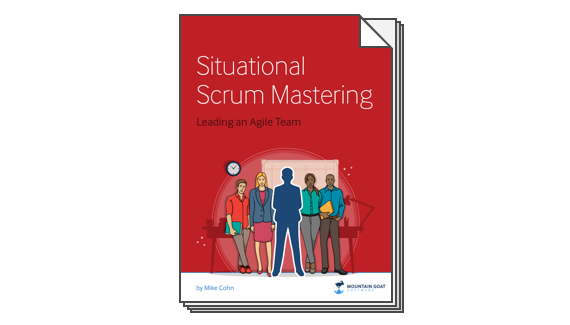Scrum Masters come from all sorts of backgrounds, from development to management. From the responses I see in class, I would guess that the largest percentage of Scrum Masters were once in project management.
Many people who have been filling project manager roles show up to our CSM classes a bit unsure where to begin. They’ve spent their careers establishing timelines and ensuring a team meets them—but now their organization’s moving to an agile way of working, and that means these project managers may have to do something entirely different. Often they become either a product owner or a Scrum Master.
Certification is not new to these individuals. Some of them have already earned their project management certification (vs a Scrum Master certification) from the Project Management Institute and are seeking a CSM to learn whether ScrumMaster is the next step for them or to better understand an agile way of working. Others have been asked by their organizations to fill a specific role and are seeking new skills.
Tips on Transitioning to a Scrum Master Role
It’s daunting to take on a new role, but it can be done! Here are a few key tips for making that transition from project manager to Scrum Master.
Realize the Differences in Project Manager vs Scrum Master Roles
Does the difference between the two roles seem obvious to you? Many people think these are just two different terms for the same role—and a huge number of organizations also treat them as synonyms.
Project managers are the drivers of their teams. They are like the coxswain (or coxs) of a rowing crew. The rowers face backward, looking at the coxswain who sits at the rear of the boat facing forward. The coxswain steers the boat but also coordinates the power and rhythm of the rowers. Like a project manager, the coxswain is clearly in charge; they literally can see what the rowers can’t.
A project manager is somewhat outside the team. They direct, encourage, create plans, and ultimately are responsible for the project team’s success. It’s right there in the title: they have direct management responsibility for their teams.
A Scrum Master follows an entirely different paradigm—more like a coach. They neither drive nor manage their teams, but instead help them to be the most successful version of themselves. They assist, they are servant leaders, they help in any way possible. In addition, a Scrum Master is responsible for ensuring the team understands the agile principles and the Scrum framework.
A favorite phrase sums it up: “A Scrum Master leads through influence, not authority.” The opposite can be said of a project manager. Understanding this difference is key! If you try to take on the Scrum Master role with the mentality of a project manager, you’re setting yourself up for failure before you even begin.
Shift Project Plan Language from Deadlines to Estimates
In a traditional project management environment, deadlines are set in stone and the more often your team nails its deadlines, the better you’ve done as a project manager. You are responsible to push your team to deliver on time, on scope, and on budget—the dreaded iron triangle. In my experience, these iron-clad deadlines rarely aligned with the initial project plan, regardless of the project manager, but perhaps your experience has been different.
In agile teams, we approach the issue of timelines from a more honest perspective. We face up to the fact that we can’t know for sure how long it will take to do a complex piece of work, much less a string of them.
So we try to project into the future and estimate when something might be done based on real data from the team, and not just a gut assumption. If a team consistently can deliver three to five items every few weeks, we can likely project their future output by multiplying that same range over a period of time.
The key here is that it’s an estimate, not a deadline. I’m not promising that the team will complete some huge chunk of work from the product backlog over the next six months. I am estimating, based on their current burn rate (or velocity), where they will be on a certain future date. If their pace changes or the scope changes, I update that projection and I always provide the most accurate current forecast to my stakeholders.
This is not to say that we can’t ever have a date set in stone. Every business has dates that can’t move (maybe it has to be done by end of year or for the start of that big industry conference). When dates are fixed like that, we have to be flexible on the scope of our projects, while staying true to the overall product vision. Traditional project management doesn’t allow for it, but as part of being agile, scrum teams often trade scope for schedule.
Focus on the Team
If I am a project manager, my focus is on schedules, deadlines, scope, and budget. I am in charge of juggling my resources (remember when we just called them people?) and my critical path to ensure the project runs smoothly and according to plan.
If I am a Scrum Master, I am focused on the team. I spend my time thinking of ways to help them improve. I’m on the lookout for interpersonal conflicts within the team. I’m watching for both internal and outward-facing miscommunications. I am in perpetual search of ways to help us get better.
You’ll need to shift your focus to shift your role. Project managers focus on output. Scrum Masters focus on outcomes.
A Scrum team wants to deliver the most value each sprint, knowing this isn’t always the same as the most volume. A Scrum Master helps the team make the biggest impact in the lives of their customers, regardless of the volume. In fact, a Scrum Master would prefer to make a bigger impact with less volume so that they have more availability to tackle other areas. A project manager simply wants to push as much volume as possible through the team.
This team focus goes far beyond productivity. Scrum Masters help resolve conflicts, coach individual team members on their role on the team, and help the entire organization to recognize and respect the benefits of a self-organizing team. It’s a big job and requires a far greater skill set, in my opinion, than simply managing a project plan. This is why we spend so much time in the Advanced Certified Scrum Master class discussing these topics.
I’ve seen many project managers become successful Scrum Masters. The key is being crystal clear on the differences in the approach to the role (Scrum Master vs project manager vs product owner). If you are a project manager who enjoys organizing timelines and keeping teams on track for deliverables or who is more interested in product owner responsibilities such as helping shape what will be created, being a Scrum Master may not be the best fit for you. If, however, the part of your job you enjoy most is working alongside a team of dedicated professionals to collaboratively make a difference in your customer’s lives, you’ll likely excel at being a Scrum Master.
Last update: February 12th, 2025









